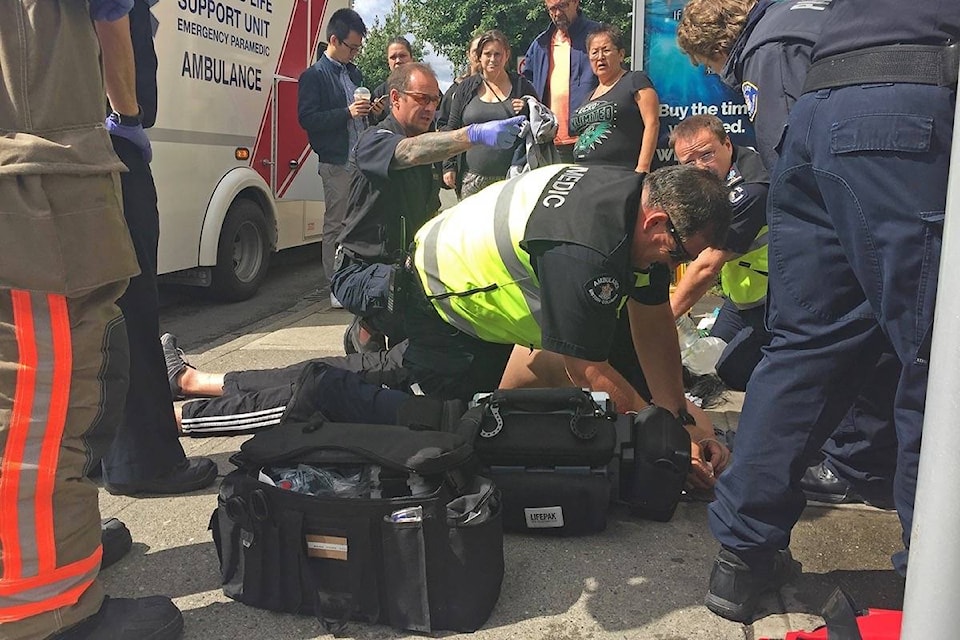The BC Coroners Service has said that 1,489 people died from illicit drug overdoses in B.C. last year. That equates to roughly four people dying of an illicit drug overdose each day across the province.
The total number of deaths is a slight increase from the 1,487 lives lost across the province to illicit drug overdoses in 2017. B.C. has seen the lion’s share of the overdose crisis, and the resulting deaths, nationwide.
Speaking to reporters at the B.C. legislature in Victoria at a news conference on Feb. 7, the province’s chief coroner, Lisa Lapointe, called the illicit drug supply on the streets unpredictable and unmanageable.
“The almost 1,500 deaths in B.C. in 2018 due to illicit drug overdoses far outweigh the numbers of people dying from motor vehicle incidents, homicides, and suicides combined,” she said.
“Innovative and evidence-based approaches are necessary if we want to effect meaningful change and stop the dying. We need to be prepared to do things differently to save lives.”
According to data compiled through toxicology reports, fentanyl was detected in 85 per cent of all illicit drug deaths last year, up from 82 per cent in 2017.
Nearly five times as many men died compared to women. A continuing trend is that middle-aged men are overrepresented, with 80 per cent of suspected overdose deaths involving males and 71 per cent involving people aged 30 to 59. Also, 86 per cent of deaths continue to occur indoors, with more people dying on the days immediately following the issuance of income assistance payments than all other days in the year.
Not a single death happened at an overdose prevention site or safe consumption site.
The three townships that bore the brunt of the crisis were Vancouver, Surrey, and Victoria, which is unchanged from 2017. Kelowna was in fourth place in terms of number of illicit drug overdose deaths, while Kamloops was in fifth with 48 deaths (up from 38 in 2017).
Across the Interior Health region there were 232 illicit drug overdose deaths in 2018, down from 244 in 2017. The Thompson Cariboo region recorded 85 deaths last year, up from 65 the previous year. In addition to Kamloops, affected communities within that region include Cache Creek, Lillooet, Logan Lake, Merritt, and Seton Portage.
B.C. Mental Health and Addictions Minister Judy Darcy said in a statement that the province is using “every possible available tool” to curb the deaths. She said that 4,700 deaths have been averted since the introduction of a number of strategies, including the provincial overdose mobile response team.
Last week B.C.’s provincial health officer, Dr. Bonnie Henry, joined in on renewing calls made previously by advocates and officials – including Lapointe – for Ottawa to legislate access to clean drugs.
“If we’re going to turn the corner on this complex crisis, we need to find the ways to provide safer alternatives to the unregulated and highly-toxic drug supply and to end the stigma associated with criminalization of people who use drugs,” she said.
Since the province declared the overdose crisis a public health emergency in April 2016, the federal government has stated it will not be considering the decriminalization of opioids. Instead, it gave governments the ability to approve overdose prevention sites at a provincial level.
Since then, B.C. has opened more than 40 sites, while a further six federally-approved safe consumption sites have also opened.
You can read the report “Illicit Drug Overdose Deaths in B.C. (2008-2018)” at http://bit.ly/2Ds0hFJ.
editorial@accjournal.ca
Like us on Facebook and follow us on Twitter
